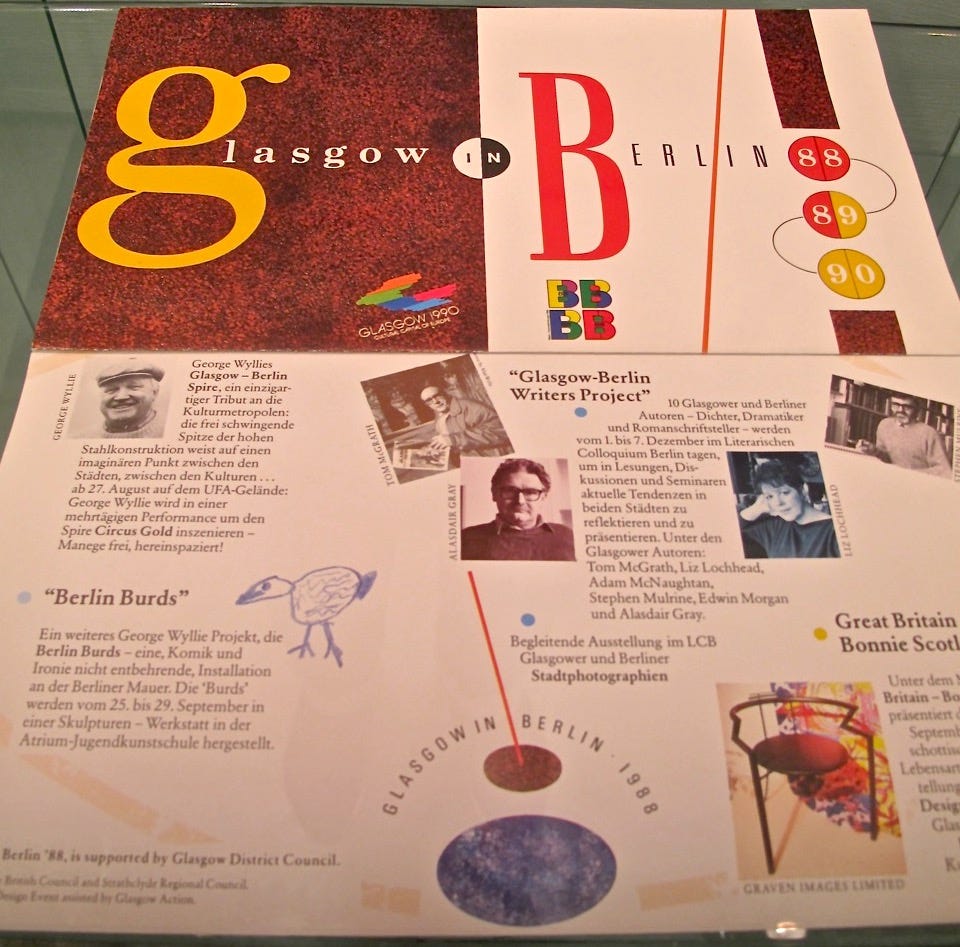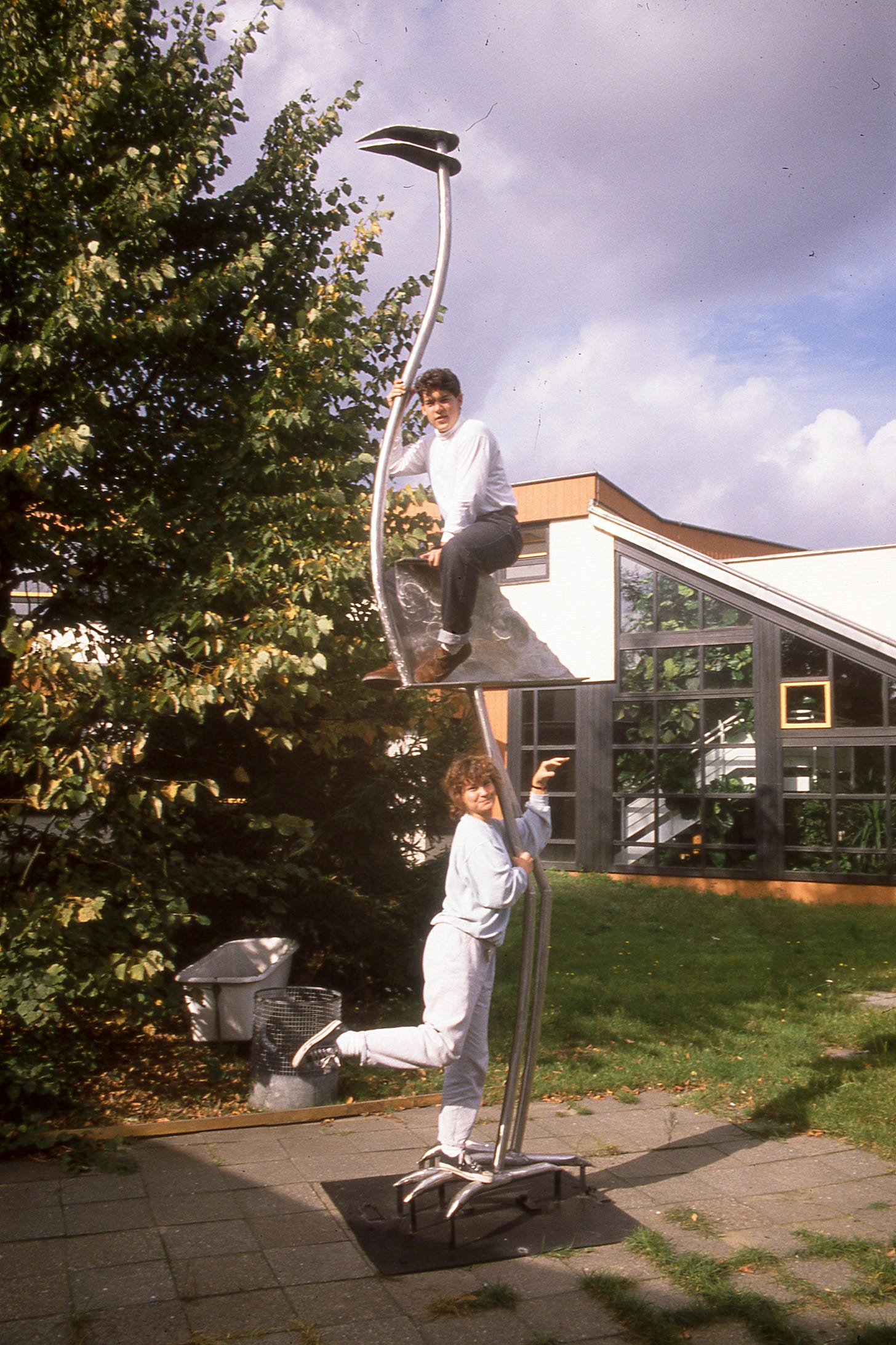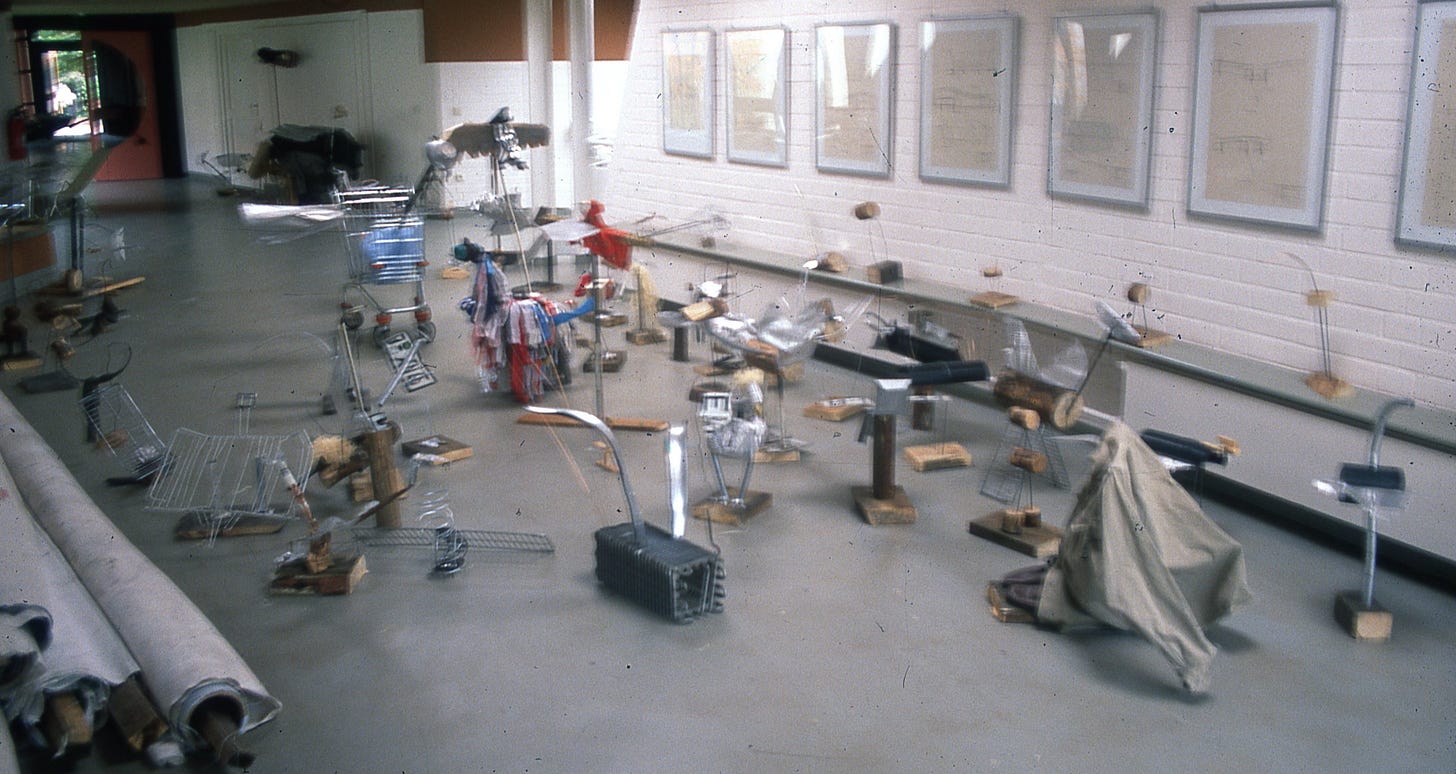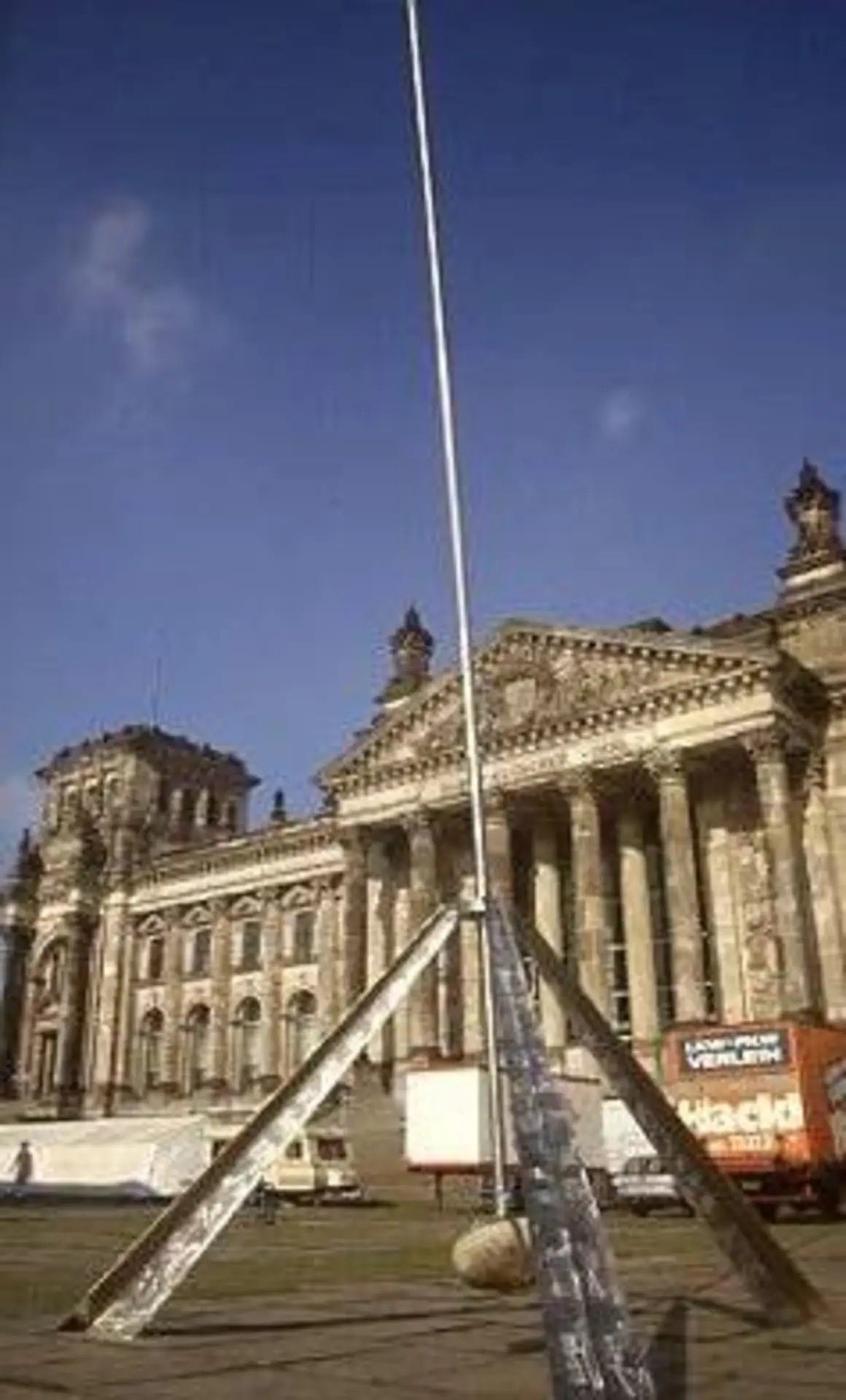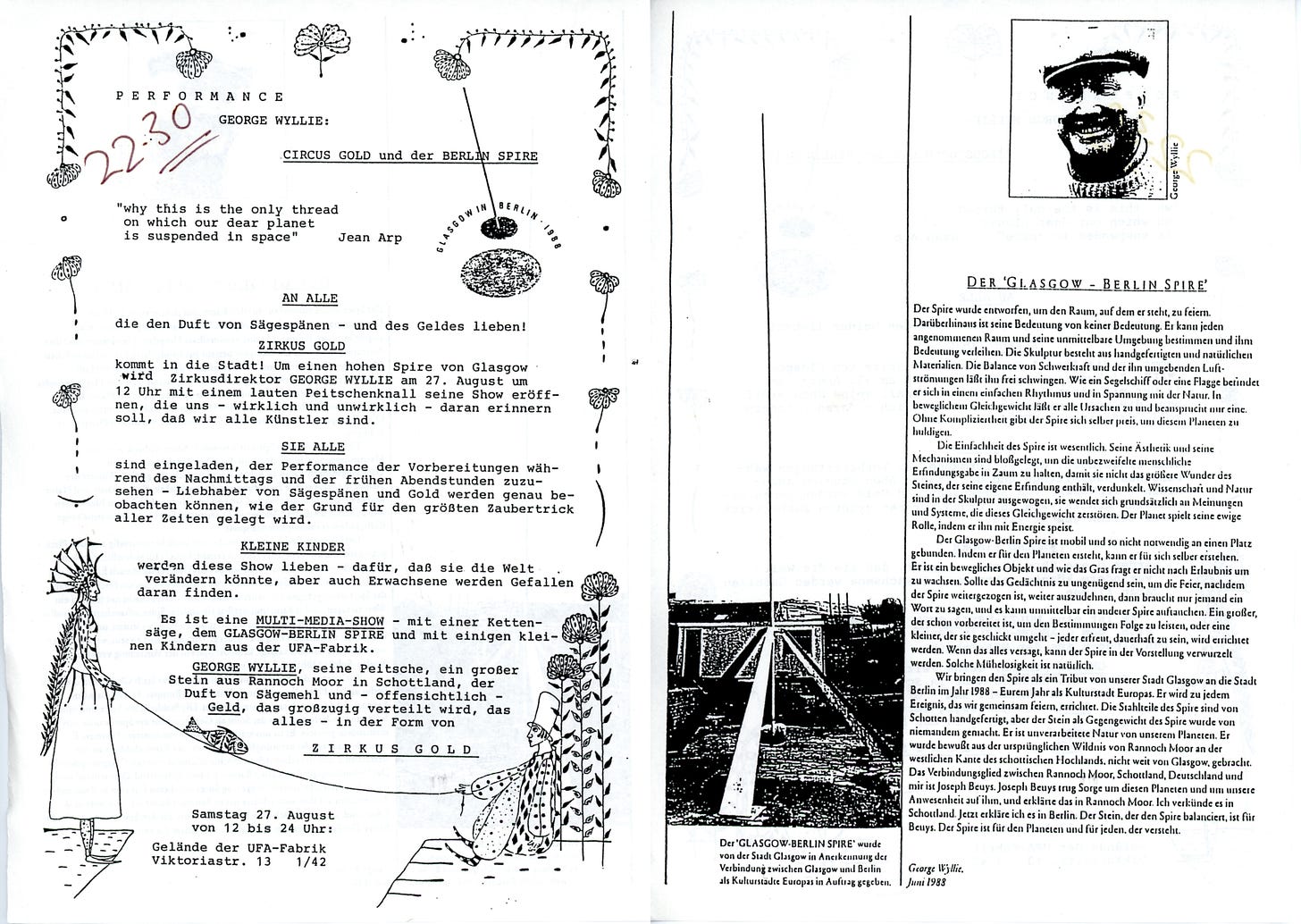Zat you Georg? – a bird is not a stone.
Archivist Pinja Kaivola King selects her favourite sculpture at The Wyllieum, and we explore the archive to find out more.
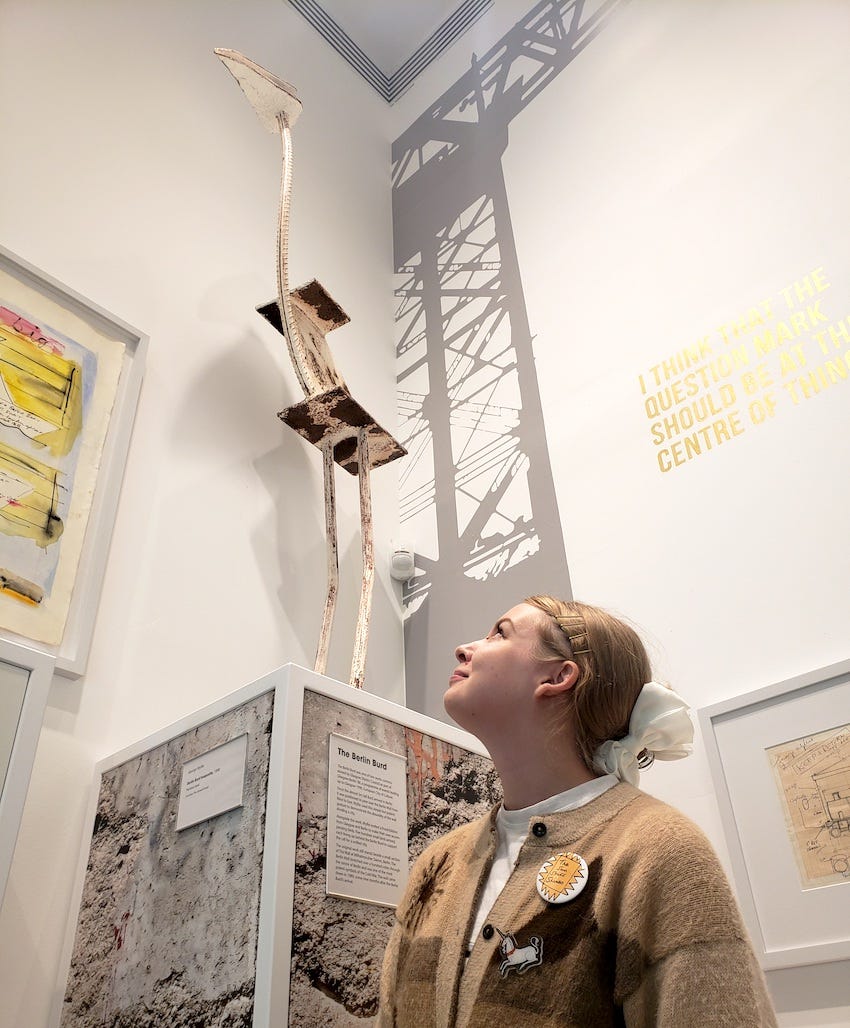
I have a bit of affinity for Cold War affairs, so my favourite George Wyllie so far (there is so much to uncover!) is the Berlin Burd, pictured here is a version of the sculpture . For a history graduate, George's relentless social commentary is incredibly interesting, and it seems that he shoots quirky one liners about the state of the world nearly compulsively. His art is incredibly "of its time and place" and remains entwined in the world and context it was created in.
George is a fun narrator in a sea of serious topics. Whether it be planting a conversation piece between a divided Berlin, commissioning little piece burds from Scottish children to the children of Russia, or extending his spires to Sarajevo in an effort to bring some understanding to regional differences, George reminds us to strive for peace even in contesting times. I admire his relentlessness in trying to bring people together in harmony. - Pinja Kaivola King
Pinja Kaivola King is the archivist on site at The Wyllieum. A Finnish expat in Scotland on a quest to “grow up” she thrives on coffee, sunshine and nostalgia.
Seriously playful in Berlin.
In 1988, George was one of the artists commissioned by the Glasgow District Council to showcase Scotland during Glasgow-Berlin 88, an exciting series of events that paved the way for Glasgow to be celebrated as the European City of Culture in 1990.
When George arrived in Berlin from Gourock in December 1988, he positioned the nearly five-meter-tall steel sculpture named the Berlin Burd to overlook the Berlin Wall, looking toward the East. This straightforward yet powerful gesture highlighted the absurdity of the wall that divided the city.
“The second biggest burd I ever made was the Berlin Burd. This burd was 5 metres high and had to look over the Berlin Wall which was 4 metres high. The politicians in Berlin were cagey about letting me do this and mein Gott, it was not easy to get permission.” - George Wyllie
For this unique event, George invited school children from both Glasgow and Berlin to design their own bird sculptures to accompany the big Burd.
“Berlin and Glasgow school-kinders cooperated by creating 500 burds of their own – all defying ornithological identification. The burds were lined up behind my big Berlin Burd who told them what it could see on the other side.”- George Wyllie
At that time, the Burd was not permanently installed; it was temporarily exhibited at the Atrium Arts Centre. Today, it stands next to a small segment of the wall, along the path of its former route on Wilhelmsruher Damm.

“A Berliner pataphysician said it was absurd to attempt to explain the confrontation of one absurdity by another. The wall came down some nine months later, and the news arrived in Gourock by ‘phone from Berlin – “Zat you Georg? – a bird is not a stone.” - George Wyllie
Equilibrium for Berlin.
The Glasgow-Berlin Spire was commissioned by the city of Glasgow as a gift to Berlin, celebrating the cultural connection between the two cities.
George saw the spire as a powerful symbol of balance, representing a deeper meaning than his other work, the Berlin Bird sculpture.
Standing 30 feet tall, the spire features a stone suspended at the end of a steel rod, which is mounted on a steel tripod. A gimbal mechanism allows the rod to sway, enabling the suspended stone to move freely within the tripod. The spire's tip points to a line between two cities and cultures.
The Glasgow-Berlin Spire was installed by George in various locations around Berlin, including at the Reichstag building.
Clear the ring - come on in!
The Glasgow-Berlin Spire also served as the centrepiece for Wyllie’s 24-hour installation and performance, Circus Gold, held at ufaFabrik—an international hub for culture and ecology that also features the ufaFabrik Circus and a children's circus school.
While the performance was infused with playful humour, it ultimately shifted focus to a serious exploration of the absurdities surrounding money and the banking system. These themes echoed those found in the artist’s award-winning play, A Day Down a Goldmine.
Watch Circus Gold on Youtube
Circus Gold took place just three weeks prior to the International Monetary Fund Conference in Berlin. Around this time, the streets were alive with mass demonstrations, as roughly 6,000 protesters gathered outside the conference venue. The Glasgow Herald reported on the scene, stating, "Stones fly as IMF protesters clash with police."
“It seems that when there are student demonstrations they dig up kleine cobble stones and throw them at police.
I reminded them that ‘ein vogel ist kein stein’ which means, as every body in Germany knows, a bird is not a stone.” - George Wyllie
If you liked this post, please think about donating to support our efforts on the George Wyllie Archive.
MAKE A DONATION
All content produced here is free for everyone to enjoy. We will not introduce a paywall or create content that is only available to paying subscribers. Art is for everyone!
However, we need funds to continue our work, so please consider donating if you can. Thank you!
With thanks to the George Wyllie Estate, George Wyllie Foundation and The Wyllieum.






